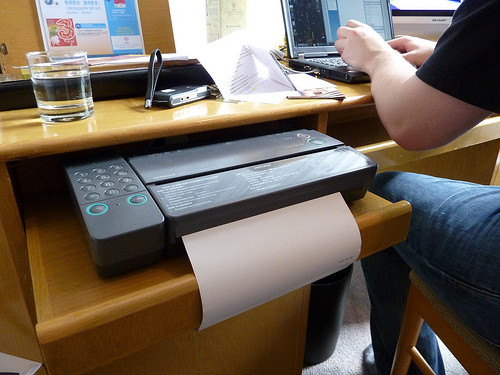 How does communication flow in your company? How is it stored and retrieved?
How does communication flow in your company? How is it stored and retrieved?
Communication can take many forms. Letters, memos, reports, office orders, invoices, purchase orders, etc. etc. Communication can be sent and received many ways. Routed, faxed, e-mailed, snail-mailed, or phoned in.
Communication can be between departments, from management to the rank and file and the reverse, with customers, with suppliers, with other business associates.
It can be costly, time-consuming and counter-productive if multiple communication methods are used.
For example, you begin a communication with a supplier with an SMS message. Then the supplier might have sent you a product catalogue by telefax. Later, he might have sent you an offer by messenger service. You might have then issued a memorandum to your supply officer to study the offer. An exchange of memos between the two of you ensues. Later on, your supply officer might have e-mailed a purchase order, which the supplier might have confirmed receipt of by phone. When the product you ordered comes, the delivery receipt is given to you in hard copy.
Confusing, isn’t it?! But it happens all the time.
How do you keep track of all these various forms of communication relating to a specific order? Some might have been filed in steel cabinets; others in email boxes; some in the memory of your cell phone; the rest in the recesses of your mind.
If you have questions regarding your order, do you know where and how to retrieve the data you need?
Don’t you think it’s high time you joined the growing number of businesses that have incorporated inbound and outbound communication into one central system through the latest IT solutions?
1. By automating your workflow, you have one streamlined mode of communication, and one common dashboard where all your requests, incoming and outgoing are placed, along with details about which stage in the business process they are at. How difficult is it to click on “Initiate a request” and send in a leave application to your manager? Best part is, you don’t even have to know who the concerning manager is and what her email id is! It’s all done for you. All you have to do is tell her why you won’t be coming in for work, and let the system handle the processing.
2. By automating your workflow and streamlining communication, it is right there, in front of your eyes, information that tells you who is responsible for what process. Initiations, approvals, rejections, inputs – are all bound to the person who has performed the action. By enabling that level of information transparency in your business process, you enforce accountability on yourself and your workers.
3. An automated workflow allows you to minimize these errors. At any point in time, a particular transaction is presented to you in its current state. So if an order is pending and you haven’t received it, you will never make a payment unless it’s state has been updated to “Received”. There will be never a moment again when you will be put to humiliation because of the ‘system’.
4. Without an automated tool you will have mails flying left right and center to figure out just to find the person “in-charge” of approval, leave alone asking him to approve of your request. A well implemented business process workflow tool, will not only have these approval hierarchies codified into itself, but will also ensure that each process has its own specific hierarchy as deemed by it.
(To be continued)
Click here for the second and concluding part of this article: https://serdef.org/archives/3445
